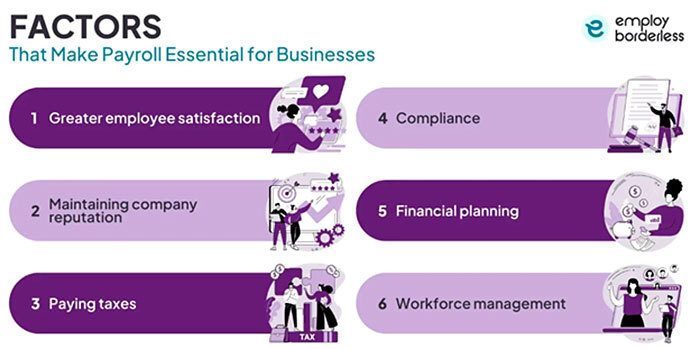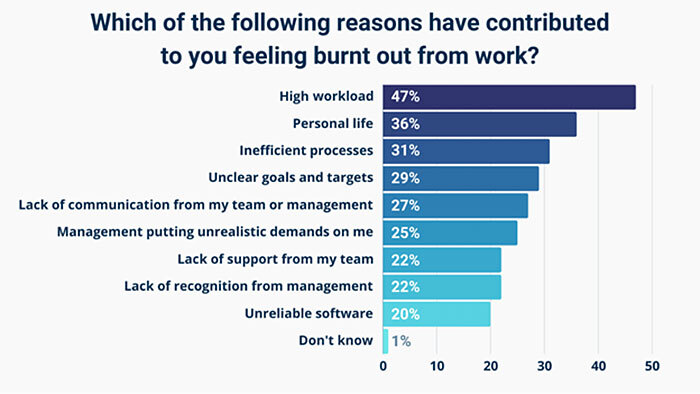Building a resilient engineering team doesn’t mean you need to shield your developers from every challenge. On the contrary, you need to equip them to adapt, recover, and thrive amid constant change. Today, resilience is crucial. According to a 2024 survey, 65% of engineering managers reported experiencing burnout in the previous 12 months. So, there is a pressing need for strategies that not only address burnout but also boost team resilience.
Resilient teams don’t just bounce back from setbacks, they grow stronger because of them. They maintain productivity under pressure, adapt to shifting priorities, and support each other through challenges. For instance, measuring cycle times can reveal process inefficiencies, allowing teams to implement changes that improve efficiency and morale.
In this article, we’ll explore six practical strategies to build resilient engineering teams that excel. These approaches are grounded in real-world experience and data, offering you actionable insights to elevate your team’s resilience and performance.
Build Slack Into the System
Engineering teams often aim for maximum efficiency, filling every sprint with tasks to optimize output. However, this approach can backfire. A study by Uplevel found that engineers average only 2.24 hours of focused work per day, with frequent interruptions leading to a 23-minute recovery time each.
To counteract this, incorporating deliberate slack time into workflows is essential. For example, allocating 10% of each sprint for unforeseen issues or creative exploration can lead to a 20% increase in code quality and a 15% reduction in burnout rates. By building in this buffer, teams can adapt more effectively to unexpected challenges and maintain higher overall performance.
Takeaway:
Don’t pack your sprint to the brim. Leaving room for the unexpected keeps your team productive, and sane, when things (inevitably) go sideways.
Talk About Failure Openly and Often
When GitLab faced a major outage in 2017 caused by an accidental deletion of production data, their immediate response was to conduct a “blameless postmortem.” This approach focuses on understanding the root causes of incidents without assigning blame. Implementing such retrospectives has been shown to improve system reliability over time, as teams identify and address underlying issues collaboratively. So, instead of pointing fingers, the team focused on understanding what happened and how to prevent it from recurring.
Source: Aristotle Performance
Creating a culture where failure is viewed as an opportunity for learning rather than a source of shame is crucial. Research indicates that teams with high psychological safety are 19% more productive, 31% more innovative, and 27% less likely to experience turnover. By developing an environment where team members feel safe to admit mistakes and share learnings, you can significantly improve your team’s performance and morale.
Takeaway:
Encourage openness about mistakes. When your team feels safe to speak up, they learn faster, innovate more, and stay engaged longer.
Make Progress Visible — Especially the Small Wins
Remote work is basically the norm for software engineers these days, but it can make people feel invisible and disconnected. Without the casual “good job” moments that happen naturally in an office, small wins can easily go unnoticed. When you make a point to celebrate these wins, be it through shoutouts in meetings or team chats, it helps your people feel valued and keeps motivation high.
Momentum drives morale, while silence creates distance. Gallup’s research indicates that employees who receive recognition for their work are 2.5 times more likely to be engaged. Moreover, organizations with strong recognition cultures experience 31% lower voluntary turnover rates. To keep your team motivated, use async updates, progress dashboards, and public kudos-small actions that make contributions visible and boost everyone’s energy.
Takeaway:
Showing progress, especially small wins, helps your team stay motivated and connected, even when working remotely.
Solve Global Payroll Issues
Managing payroll across multiple countries presents a complex challenge due to varying tax laws, employment regulations, and reporting requirements. A Professional Employer Organization (PEO) simplifies this process by handling all legal, tax, and compliance aspects of payroll on behalf of businesses. This guarantees that employees are paid accurately and on time, regardless of their location, while the company remains compliant with local laws.
Beyond payroll processing, PEOs assume the legal responsibilities of employment, including benefits administration and adherence to labor laws. This allows companies to onboard international talent without establishing a legal entity in each country, saving time and reducing overhead costs. As a result, businesses can focus on their core operations while mitigating risks associated with global employment.
Source: Employ Borderless
Hence, if you are looking to expand rapidly into new markets, outsourcing some of those efforts to a PEO might prove advantageous. It provides the flexibility to hire employees in different regions without the administrative burden of setting up local subsidiaries. With such help, your firm can enjoy accelerated market entry while staying on the right side of the (labor regulatory) law.
Takeaway:
A PEO takes the payroll and compliance burden off your plate, so you can hire globally without getting tangled in red tape. It’s a smart move for fast-moving teams that want to expand internationally without slowing down.
Cross-Train Early to Prevent Crisis
When a senior engineer leaves mid-project, chances are that only one junior could step in-and only because they had paired before. This scenario underscores the importance of cross-training within engineering teams. By encouraging practices like pair programming, task rotation, and shared ownership of systems, teams can build resilience and achieve continuity even when unexpected changes occur.
Skill redundancy is a cornerstone of resilient teams. A study analyzing 40 proprietary software projects found that developers with low code ownership took 45% longer to resolve small issues and 93% longer for large ones in low-quality codebases. This highlights the efficiency gains when team members are familiar with various parts of the codebase.
Implementing structured scaling processes, including cross-training, has been shown to accelerate team growth by 40% while maintaining quality. By proactively cross-training team members, you not only prepare for unforeseen challenges but also stimulate a culture of collaboration and continuous learning.
Takeaway:
Redundancy beats reliance. By cross-training early, you equip your team to handle disruptions smoothly and maintain momentum.
Prioritize the Team’s Energy Over the Output
Chasing sprint velocity at the expense of well-being might boost short-term numbers, but it often leads to long-term setbacks. When teams are pushed to their limits without adequate recovery, burnout becomes inevitable, slowing progress and diminishing overall productivity. It’s crucial to recognize that sustainable performance stems from balanced workloads and attentive leadership.
Burnout isn’t a badge of honor; it’s a costly issue. Analyses have found that employee burnout contributes to $322 billion in global turnover and lost productivity annually. Moreover, burnout accounts for 15% to 20% of total payroll in voluntary turnover costs.
Source: Strong DM
To maintain a resilient team, prioritize energy management alongside task completion. Incorporate regular check-ins during retrospectives to gauge team well-being and schedule genuine downtime to recharge. By valuing your team’s energy, you promote a culture of sustained productivity and engagement.
Takeaway:
Sustainable teams outperform exhausted ones. By prioritizing well-being, you won’t instill your firm with a mere compassionate image, you’ll gain a strategic advantage instead.
Conclusion
Resilience isn’t built overnight, and it doesn’t come from running faster, it comes from running smarter. By making room for slack, celebrating small wins, cross-training early, and protecting team energy, you create an environment where engineers don’t just deliver, they thrive. Each of these strategies is simple to implement, but together, they form a powerful foundation for resilient engineering teams that can weather setbacks, adapt quickly, and keep moving forward with confidence.
About the Author











